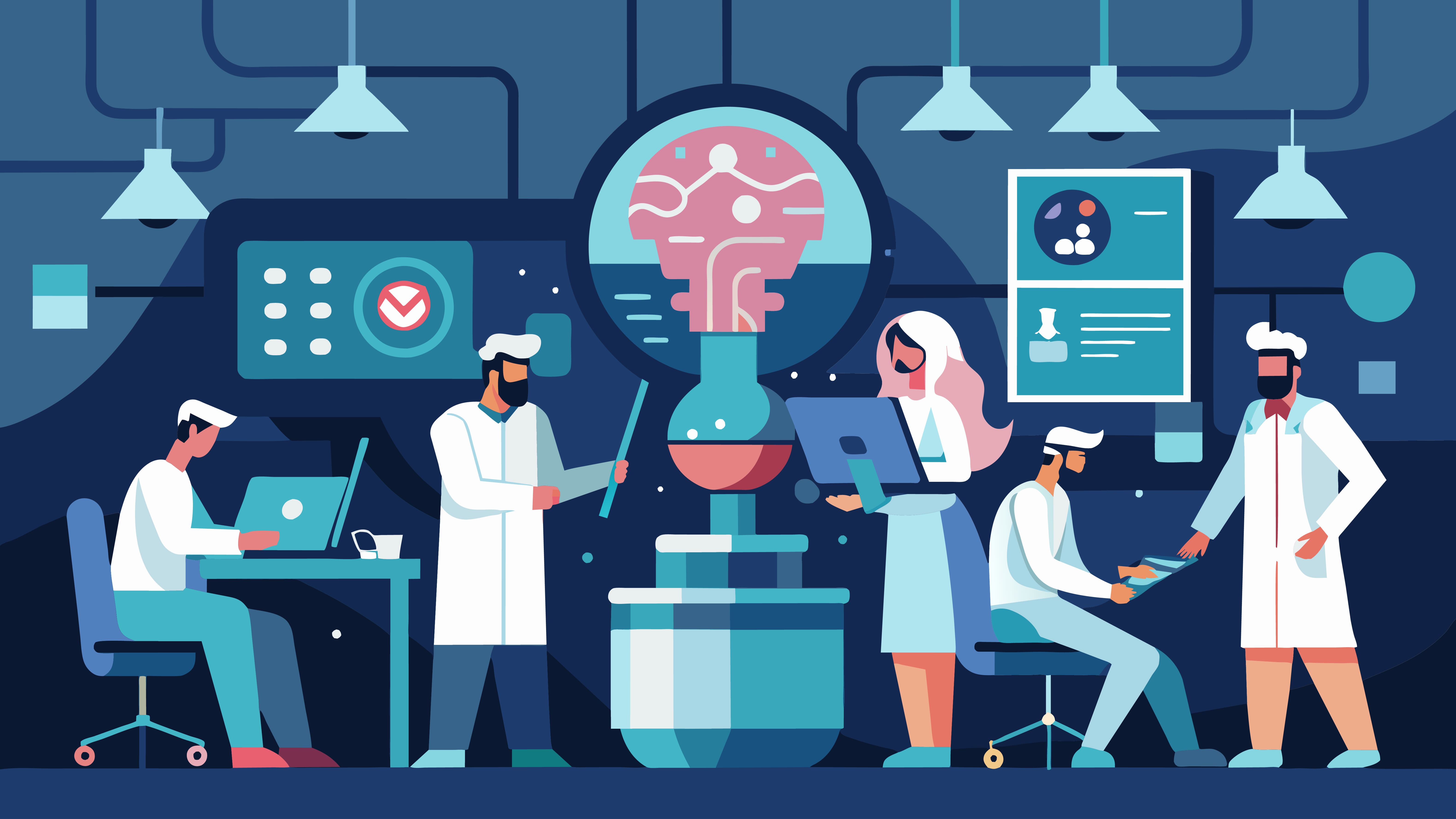by Michael Bani
7 minutes
How AI is Revolutionizing Regulatory Compliance in Pharma
Discover how AI transforms pharmaceutical compliance, ensuring strict regulatory adherence and enhancing efficiency.

Introduction
As people consume pharmaceutical products, adherence to stringent standards is a prerequisite. AI is not only transforming the drug discovery process, manufacturing, and packaging but also assisting in compliance with stringent global standards. In this blog, we share some exciting applications of AI to ensure your medical products and processes adhere to the stringent guidelines set by regulatory bodies. What's more? We also discuss the potential challenges you may face and answers to your frequently asked questions. Keep reading, and keep learning!
How can AI transform regulatory adherence processes?
AI drives the Pharma 4.0 revolution. Let’s explore how AI enhances the efficiency and speed of regulatory adherence processes.
1.Automating regulatory processes
Regulatory documents often require specific formatting and language, which is tedious to do and check manually. AI technologies can be employed to perform these tasks, saving time and money. A final manual-checking stage can be included before submission to ensure the AI has appropriately created all documents.
2.Simplified data management
Data management and analysis are complicated tasks that often take months or longer. AI technologies such as machine learning (ML) and natural language processing (NLP) can be used to analyse large databases of clinical trial results, literature studies, patient records, historical reports, etc., and create reports for regulatory submission. This ensures all data submitted for regulatory approval is error-free and accurate.
3.Predictive analysis
AI-powered regulatory compliance technologies can also simulate the entire regulatory approval process. These can use historical data to identify potential roadblocks. For example, predictive analytics can predict operation processes that may not comply with guidelines, allowing companies to pre-address these errors.
4.Regulatory guideline tracking
Pharmaceutical companies operating in multiple countries must keep track of the shifting regulator guidelines in various regions. AI technologies can be used to monitor updates in regulatory policies. This timeline information can be used to adapt to regulatory changes quickly.
5.Complex information interpretation
AI can also be used to interpret regulatory guidelines. New guidelines and updates can be input into the developed AI model, providing a detailed list of steps the company needs to take to remain compliant. If the model has information on the company’s processes and guidelines, it can compare both to highlight non-compliance.
These are only some ways AI can be applied to regulatory adherence. AI can become a reliable tool for pharmaceutical companies, allowing them to operate more efficiently. Various AI-powered technologies can be integrated to ensure regulatory compliance. Here are a few.
AI Technologies in Pharma Compliance
Various AI-powered regulatory compliance technologies are in the pipeline and will undoubtedly be released and used in the following years. Therefore, let’s look at two AI technologies that will shape pharma compliance.
1.Natural language processing (NLP)
NLP is a type of AI that allows human-computer interaction. The simplest example is ChatGPT, where you input a query, and the AI model uses all its training information to answer your question. Similar models can be used in regulatory compliance.
2.Machine learning (ML)
ML is a combination of AI and computer science focusing on data analytics. Machine learning models utilise historical data to learn the way a human thinks. Consequently, it provides suggestions or predicts answers/changes.
Source
Potential Applications
Here are some scenarios for using AI in pharma compliance:
1.Pharmaceutical teams must ensure their facilities, resources, operation plans, etc., comply during the setting-up stage. This can be simplified using AI, providing a list of Do’s and Don’ts based on regulatory guidelines. NLP models can also decipher complex regulatory guidelines and offer a simple list of rules for the company. The company can design, modify, and operate its processes accordingly.
2.For companies operating in multiple countries, AI models can create documents highlighting regulatory process differences in different countries. The required operation processes can be altered when creating a product batch for a specific country. For example, the EMA and USFDA have different regulatory guidelines. The AI can provide a list of operational changes required when producing goods for the EU and USA.
3.AI models can also predict drug labelling data in advance. For example, information on the developed drug structure, efficacy, targeted disease, side effects, etc., can be input into the model to predict how the drug may be classified. This will help develop appropriate documents in advance so the approval team will avoid roadblocks due to wrong document submission.
4.Pharmaceutical teams are often drowning in a sea of information because they need to collect information from external feeds (FDA warnings, license approval review reports, white papers, etc.), internal feeds (corrections, updates, risks, responses to regulatory letters, etc.), and operations data (clinical trial results, manufacturing data, sales data, etc.). These AI models can be used to analyse data, simplify it, and feed it to an external dashboard, making it easy for teams to track data.
While many use-case scenarios exist for AI in pharma compliance, AI-driven compliance initiatives are hindered by some critical roadblocks.
Source
Current Challenges
There are a few challenges associated with applying AI in the process of pharma compliance, which are discussed below:
1.Lack of algorithm transparency
Regulatory non-compliance can have severe financial and operational consequences for pharmaceutical companies. While AI models can be used for decision-making, they need to be transparent and provide clear reasoning behind their decisions, which currently needs to be improved.
2.Regulatory frameworks
AI advancements are rapidly shaping the pharmaceutical space. However, regulatory guidelines and frameworks have yet to meet these advancements. This can create challenges for pharmaceutical companies that are already using AI. Establishing these guidelines may mean pharmaceutical companies have to remodel or adapt their AI to the guidelines, which will be expensive and time-consuming.
3.Data privacy laws
All AI models will be trained on historical data. However, pharma has strict regulations on data use and storage. Pharmaceutical companies may be unable to retain their data indefinitely, which poses a challenge when training models.
Source
Conclusion
AI in pharma compliance will undoubtedly benefit pharmaceutical companies, ensuring regulatory adherence. AI can automate regulatory processes, simplify data management, predict guideline changes, and interpret regulatory information. As highlighted above, several use cases have already been established for AI-driven compliance initiatives. However, their success is restricted by the need for algorithm transparency and data privacy laws. As the regulatory framework catches up to AI advancements, we are bound to see a rapid shift in the use of AI for pharma compliance.
FAQs
1.What is the future of AI in pharma compliance?
The future of AI in pharma compliance is promising. New advancements are expected in predictive analytics via the integration of AI with digital health records.
2.Has AI been used for other aspects of the pharmaceutical industry?
AI has been integrated into various pharmaceutical processes such as manufacturing, drug discovery, and development.
3.Can AI predict regulatory hurdles?
AI can be trained using historical data to identify potential hurdles in drug manufacturing due to regulatory non-compliance.
.webp)



